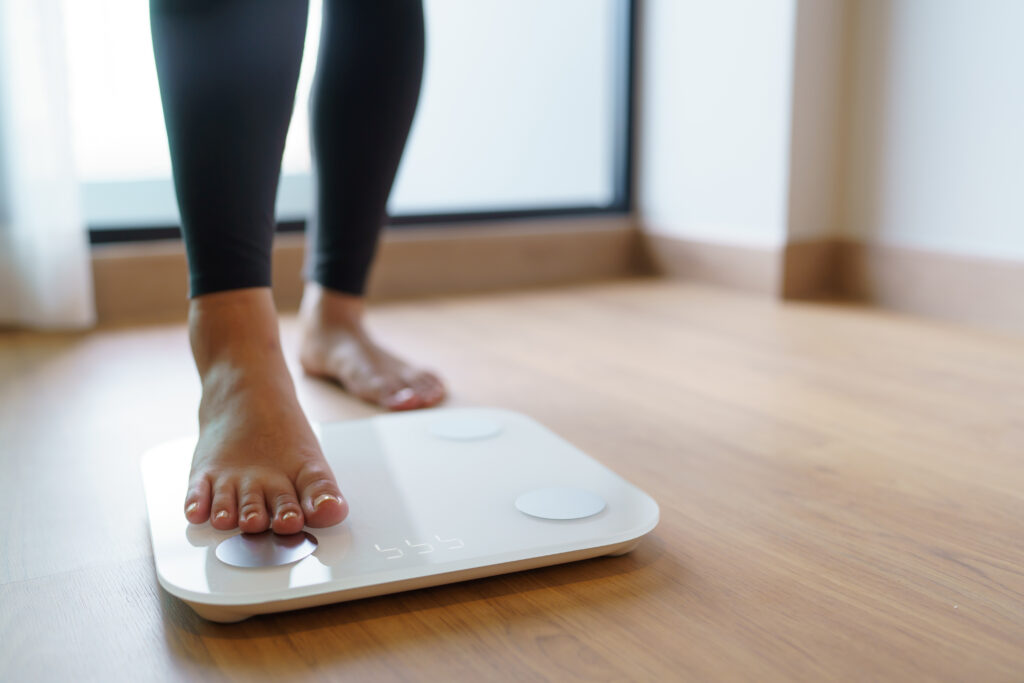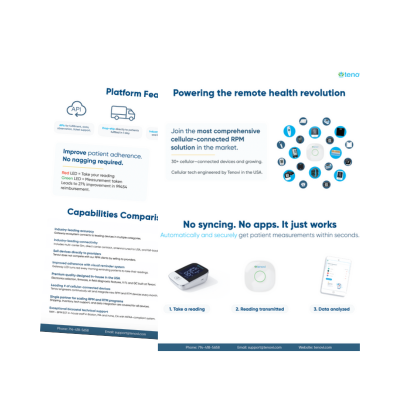Remote patient monitoring (RPM) use cases continue to grow as healthcare increasingly shifts to connected patient-centered care. With RPM devices, vital signs such as blood pressure, glucose levels, and oxygen saturation can be collected outside of traditional clinical settings. Giving healthcare providers access to real-time vital sign data has opened up opportunities for early intervention, better chronic disease management, and improved recovery outcomes.
In this article, we explore 13 important remote patient monitoring use cases. It details how RPM is being applied in chronic disease care, post-surgical recovery, and how it is expanding access to proactive care for diverse patient populations. Each example illustrates how RPM helps close care gaps and supports more effective, continuous care.
Remote Patient Monitoring Use Cases
Patients who qualify for remote patient monitoring use medical devices that measure and transmit their physiologic data to their providers. RPM gives providers daily health data to make informed decisions and intervene early when necessary. With RPM, efficiency is improved, hospital visits are reduced, and patients become more engaged.
Remote patient monitoring is particularly well-suited for individuals managing chronic conditions. One important systematic review identified 272 articles published about RPM between 2000 and 2018. The study identified cardiovascular disease as the most commonly studied remote patient monitoring use case. Study results concluded that RPM enhances patient care and treatment effectiveness by transitioning from results to conclusions.
Below is a list of 13 unique remote patient monitoring use cases.
13 Remote Patient Monitoring Use Cases
Remote patient monitoring devices enable daily monitoring and analysis of a patient’s vitals and condition outside a conventional clinical setting. For example, blood pressure, glucose, oxygenation levels, heart rate, and temperature. The following sections provide 10 examples of remote patient monitoring use cases and how RPM technology, when appropriately implemented, can improve patient care and quality of life.
1. Cardiovascular
Implantable patient remote monitoring, such as pacemakers and heart resynchronization therapy, monitors a patient’s heart rate and physiological condition. Remote cardiac monitoring devices are especially beneficial for patients at risk of cardiac arrest. When a patient’s wearable or implanted device detects abnormalities relating to cardiac arrest, it immediately alerts the patient’s healthcare provider and provides emergency procedures.
Regarding remote patient monitoring use cases in cardiac care, research has shown that RPM can significantly reduce systolic blood pressure (SBP) and diastolic blood pressure (DBP) compared to usual care and self-monitoring alone for hypertension. In addition, one frequently published meta-analysis shows a positive effect on heart failure-related admissions and all-cause mortality rates. Finally, recent clinical guidelines strongly recommend the use of RPM for Atrial fibrillation detection in both stroke and non-stroke patients for atrial fibrillation
2. Diabetes
Patients with diabetes can benefit from blood pressure and blood sugar level monitoring. Remote blood glucose monitoring devices can help detect abnormalities in blood sugar measurements. Some apps used alongside RPM devices can provide diet, medication, and nutritional suggestions to help maintain normal blood sugar levels. For instance, the UCHealth Virtual Health Center remote patient monitoring program has successfully used technology and coaching to monitor and remotely manage blood sugar levels.
In addition, some remote patient monitoring service companies, like Tenovi, track and analyze patient usage of lancets and test strips and provide replenishment programs for glucose monitoring supplies. As a result, Tenovi automatically ships and refills blood glucose meter (BGM) supplies, ensuring patients always have the necessary remote blood glucose monitoring supplies on hand.
3. Chronic Kidney Disease
The third of the 12 remote patient monitoring use cases is chronic kidney disease, which is common in those with diabetes. Remote patient monitoring aids in managing chronic kidney disease with daily blood glucose and blood pressure monitoring. Excess fluid in the body is also a common symptom of chronic kidney disease. Patients with kidney disease also require close monitoring of their daily fluid intake and their weight. Daily weight monitoring can be achieved through the use of a remote patient monitoring scale.
4. Fatty Liver Disease
Remote patient monitoring can be used to manage fatty liver disease by tracking key health metrics and encouraging lifestyle changes. Devices commonly used in RPM for this condition are weight monitoring scales. Scales allow for regular tracking of weight and body composition. Tracking weight helps patients and providers identify trends, assess progress, and adjust diet or exercise plans as needed.
Blood glucose meters can monitor blood sugar levels and provide actionable data to refine treatment and improve metabolic control. Finally, fitness trackers and smartwatches monitor physical activity, heart rate, and sleep quality, offering insights into overall health and supporting tailored management strategies.
5. Cancer
The following example of remote patient monitoring use cases is for cancer patients. Remote patient monitoring enables clinicians to observe cancer development and treatment effectiveness closely. It also transitions cancer care outside the conventional clinic setting into patients’ everyday lives for more consistent and comfortable patient monitoring.
According to research published in The British Medical Journal (BMJ), remote patient monitoring for cancer patients is an effective method for cancer care management. RPM provides improved access to care, as the patient and provider can communicate virtually when symptoms are detected with remote medical devices. In addition, remote monitoring for cancer patients uses FDA-cleared RPM devices such as blood pressure meters, scales, thermometers, and pulse oximeters to track signs in real-time.
6. Asthma
Like the prior remote patient monitoring use cases, asthma patients also benefit from RPM. A remote peak flow meter allows asthma patients to test their respiratory function quickly and enables the patient and physician to assess symptoms. In addition, closely monitoring peak flow meters in asthma patients helps identify asthma flare-ups early. A Remote peak flow meter is used to grade the severity of acute asthma. When a qualified healthcare professional reviews and monitors the values,
7. COPD
Because symptoms of mild COPD aren’t always apparent, people can experience critical drops in blood-oxygen levels and not even know it. If a patient’s blood oxygen saturation level (SpO2) is under 90%, the RPM platform will automatically alert the clinician for quick intervention. Continuous monitoring can reduce hospital admissions and emergency room visits in COPD patients. In addition, remote monitoring devices can lower flare-up rates. Long-term remote monitoring encourages COPD patients to manage their condition actively. Patients also see that lifestyle choices affect their vital signs. Remote pulse oximetry devices determine how well a patient’s lungs function by using light to measure oxygen levels in red blood cells. Blood-oxygen levels are typically tested at the fingertips with a pulse oximeter to measure how well oxygen is distributed to areas furthest from the heart.
8. Remote Patient Monitoring Use Case in Senior Care
As the aging population continues to grow, this population is becoming a priority among remote patient monitoring use cases in healthcare. When adults 50 and older were surveyed, 80% said they preferred to age in place for as long as possible. RPM is crucial in caring for elderly populations because it enables caregivers to monitor patient well-being remotely, detect falls or emergencies, and intervene swiftly. Telehealth and remote patient monitoring provide real-time health data, eliminating the reliance on outdated snapshots for better patient care. One of the critical advantages of telehealth and remote patient monitoring is the ability to monitor patients and prevent potentially dangerous situations.
9. Dementia Care
To accommodate an aging U.S. population, remote patient monitoring offers better care and treatment options for those battling dementia. Remote medical devices are highly beneficial to this population. RPM devices provide surveillance, allowing providers and caregivers to prevent and respond to falls and provide daily medication reminders. Some RPM devices even offer GPS monitors to help family members and caregivers keep track of the patient at all times. Telemedicine is valuable for individuals with cognitive impairments such as Alzheimer’s Disease, improving access, diagnosis, treatment, and personalized care.
10. Bariatric Care
Bariatric patients require rigorous tracking throughout the often long pre-operative and post-operative process. Patients often do not meet the weight loss requirements, resulting in the cancellation of surgery. This can be challenging for both patient and provider teams, though it is common in the U.S. healthcare system. Canceling elective procedures costs roughly $16.3 to $17.7 billion monthly in lost revenue.
Surgery cancellation prevention is one of the most practical remote patient monitoring use cases. Patient issues are the most common reason for bariatric surgery cancellation. Therefore, leveraging RPM for consistent patient tracking can significantly reduce the likelihood of cancellations. By automating the pre- and postoperative process, healthcare teams can save time and cost while ensuring comprehensive monitoring of patients.
The first and best way for healthcare providers to prevent cancellations is by leveraging remote weight monitoring through RPM. This approach helps patients meet qualifying milestones by tracking their weight loss progress. With RPM scales, healthcare providers can motivate bariatric patient candidates to lose the weight required for surgery qualification. Additionally, automated reminders can easily be set up to improve patient adherence to the prescribed weight loss plan.
11. Remote Patient Monitoring Use Cases in Postoperative Care
Among several compelling remote patient monitoring use cases that emerge is in postoperative care. Monitoring vital signs after surgery, especially during the critical 30-day period, can help prevent postoperative deaths after the patient is discharged. RPM allows surgeons to remotely track patients’ recovery progress, monitor incisions, and provide timely guidance, reducing the need for frequent hospital visits. A McMaster University study reported that patients using remote patient monitoring after surgery experienced lower readmission rates (5.3%), reduced pain after a week (13.9%), and fewer medication errors (24.2%).
12. Pregnancy Care
Remote pregnancy monitoring solutions help to effectively manage high-risk pregnancies before, during, and after delivery. Pregnancy requires frequent obstetrics visits to help spot any health issues early, when complications are easier to treat. High-risk pregnancy patients require an increased frequency of in-office visits. Sufficient evidence supports the effectiveness of telehealth use cases and remote patient monitoring in patients with chronic disease, pregnancy, short-term illness, and more.
13. Medication Adherence Tracking
Some patients find it difficult to adhere to their medication schedules for different reasons. It may be due to forgetfulness, cost concerns, or lack of education on the importance of taking a medication. Medication nonadherence is when a patient does not follow their healthcare provider’s instructions for taking the medicine. Not taking medication can lead to greater health risks and higher mortality rates.
Medication adherence is available through remote therapeutic monitoring, often with a smart pill box that is used to track a patient’s medication-taking behavior. Visual reminders can remind a patient when it’s time to take their medication, and once a patient takes the medication, the event is transmitted to the patient’s physician. This lets the physician know that their patient is adhering to their medication schedule.
Understanding Remote Patient Monitoring Use Cases
The 10 discussed remote patient monitoring use cases highlight its transformative impact on various healthcare scenarios, from chronic disease management to postoperative care. By bringing healthcare into patients’ homes, RPM improves patient outcomes, allows for timely intervention, and enhances accessibility to healthcare. As remote patient monitoring continues to evolve, healthcare providers can leverage this technology to deliver better patient care, increase efficiency, and achieve positive health outcomes.
Whether your healthcare partners are interested in adopting remote patient monitoring to increase patient engagement, create a more efficient workflow, or increase revenue, Tenovi can help you find a better solution. Book a free demo today.


